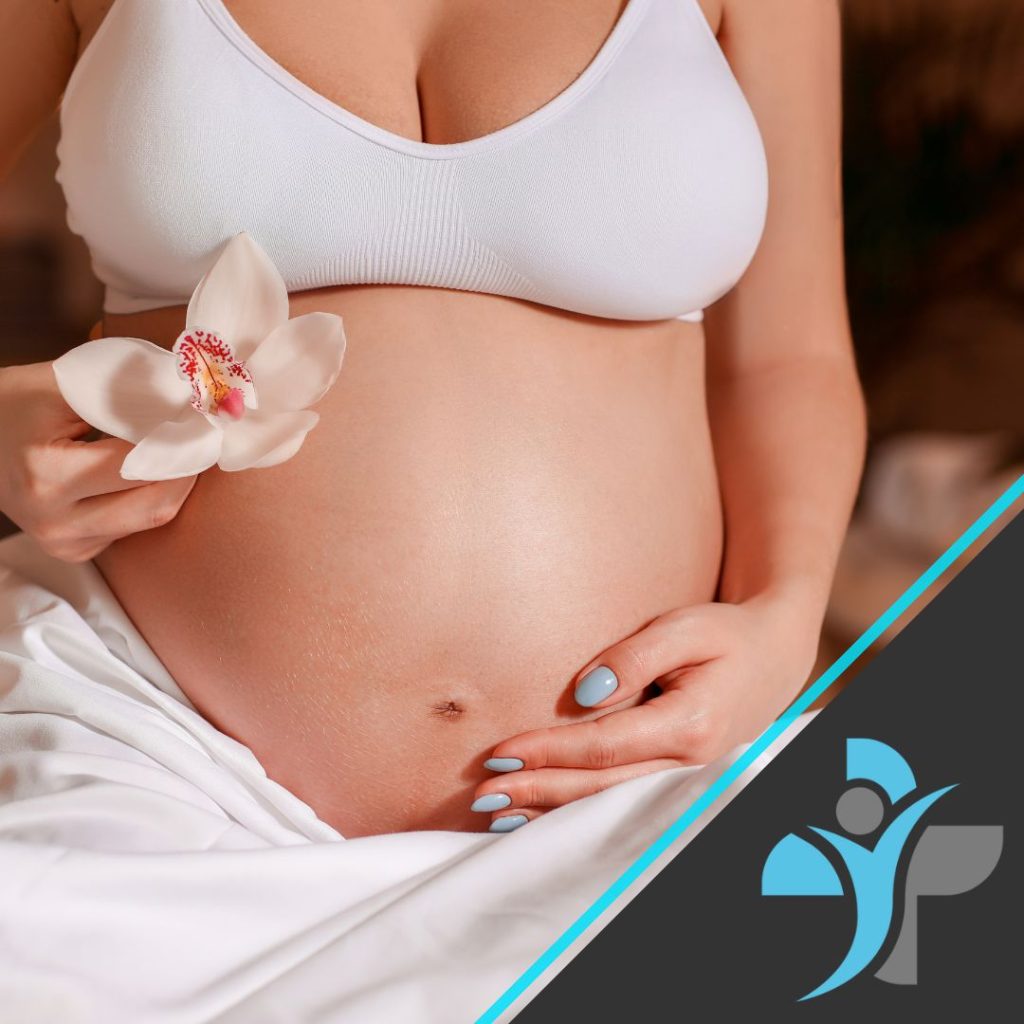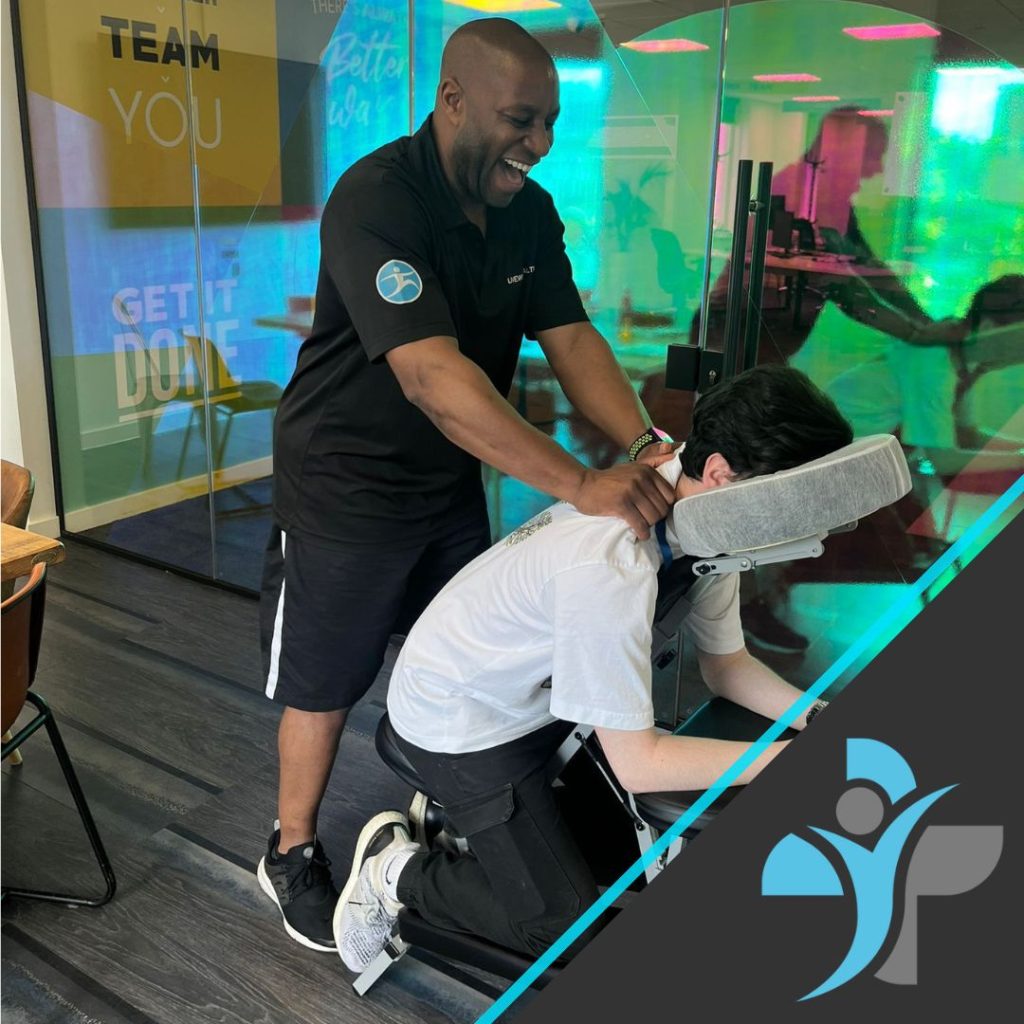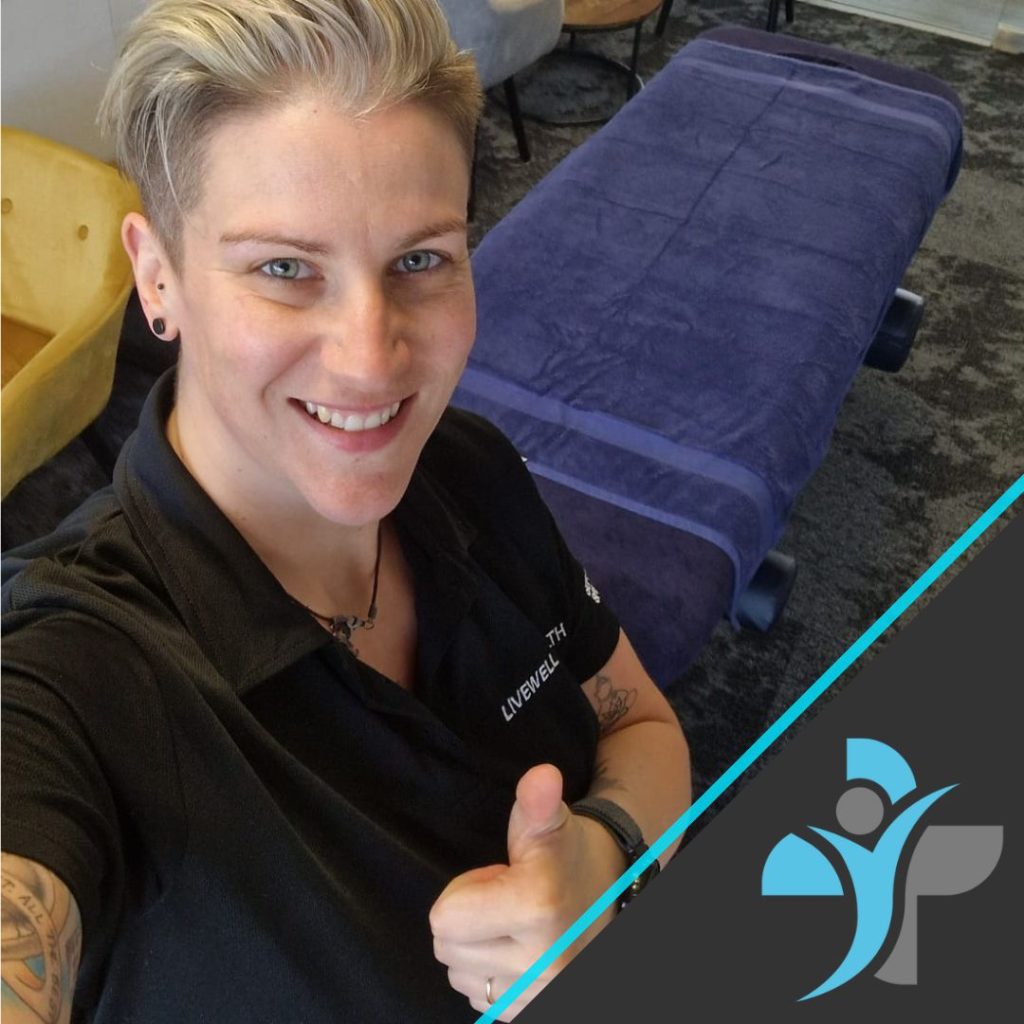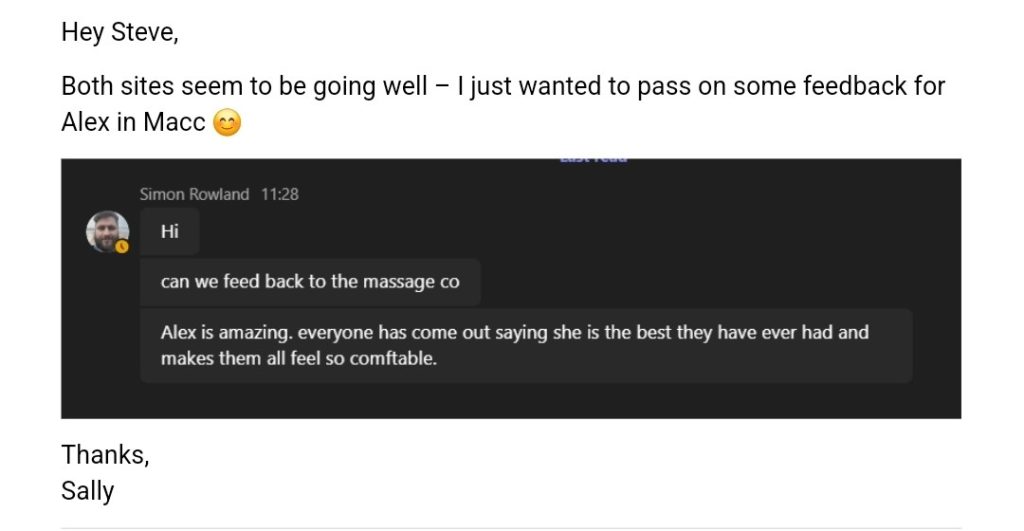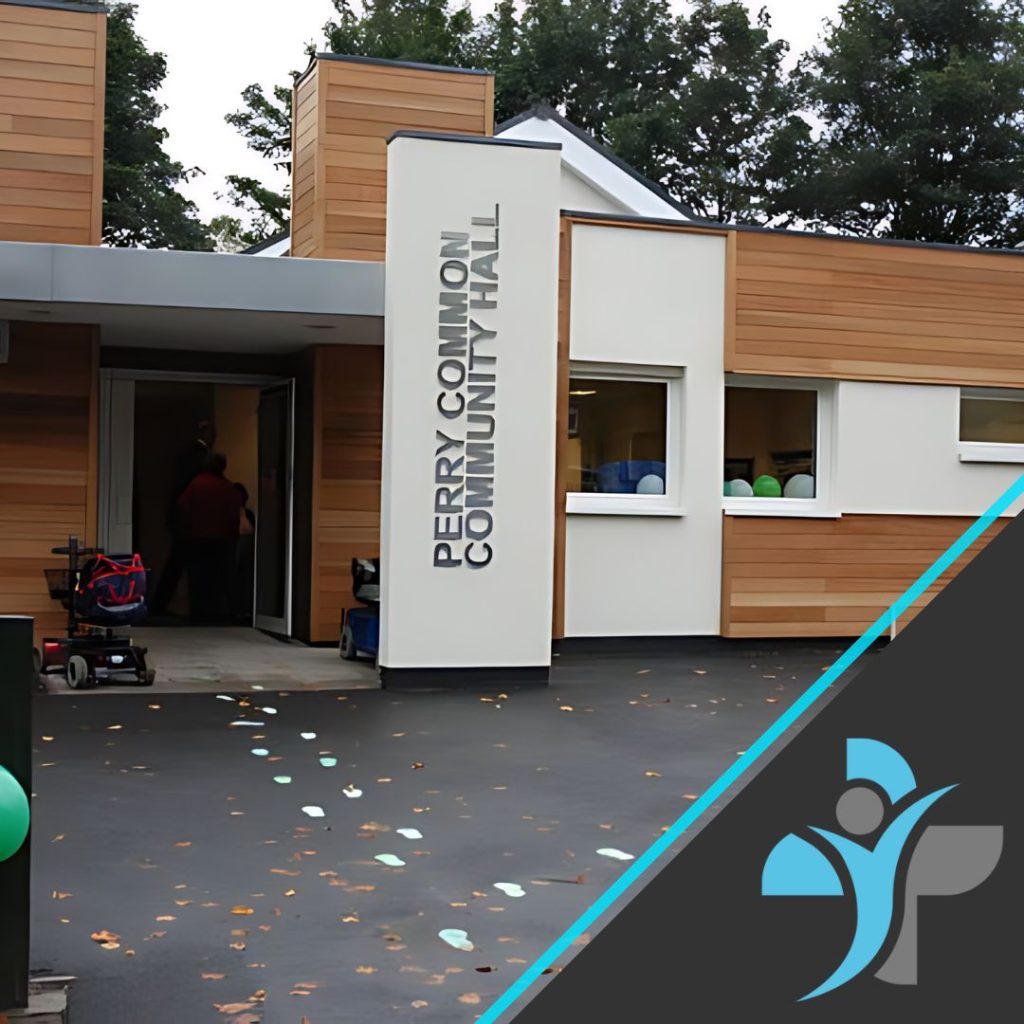BACP Treating their Staff to Corporate Chair Massage
In December 2024, Livewell Health had the privilege of providing corporate chair massage services through an employee wellbeing scheme offered to the hard working employees at BACP (British Association for Counselling and Psychotherapy). Our experienced team of senior soft tissue specialists, including Leon, Valentina, and Callum, delivered on-site massage treatments to support employee wellbeing through our very popular chair massage service, helping to combat the physical and mental strain of the modern workplace and relieving stress and tension.
The Power of Chair Massage in the Workplace
Chair massage is an on-site massage service which is a convenient and space saving option for many companies. It does not require any large couches or other cumbersome furniture, just simply a specially designed massage chair that can be used by practically anyone. This therefore makes it an efficient way to deliver corporate massage benefits in a professional setting.
Massage at work can be seen as a potential solution to combat the physical and mental strain of the modern workplace. Research consistently highlights the benefits of office massage and it has been proven with many of our clients to reduce absenteeism and also help with recruitment and retention of the best staff. Investing in office massage has been proven to boost employee morale, reduce tension and improve employee productivity, in a lot of cases for every £1 spent on employee wellbeing initiatives such as massage, the company increases their profit margins by £10.
The employees at BACP were treated to targeted soft tissue therapy, whereby our expert team focused on relieving tension in the neck, shoulders, back, and arms in some cases alleviated certain aches and pains that the staff had felt for some time, such as migraines, headaches and general tension. These are all common areas that are affected by prolonged desk work. The employees noticed an immediate change and highlighted they felt reduced stress levels, improved focus, and an overall sense of rejuvenation.
Why Corporate Chair Massage Matters
It is vital to understand the importance of employee wellbeing. Unfortunately in most cases, where there are fast paced working environments, this is often overlooked. This in turn leads to decreased enagegement and decreases employees productivity. However, introducing corporate massage services into a companies wellness initiatives can create an environment where employees thrive and therefore, business success follows suit. By prioritising employees wellbeing, companies pave the way for a happier, more engaged workforce.
Some key benefits of office massage include:
- Stress Reduction – Alleviates physical and mental stress, promoting a more relaxed workforce.
- Enhanced Productivity – Employees return to work feeling refreshed and more focused.
- Improved Posture – Helps counteract the negative effects of prolonged sitting and screen use.
- Increased Job Satisfaction – Demonstrates an employer’s commitment to employee wellbeing, boosting morale and retention.
- Convenience & Accessibility – Chair massage can be delivered on-site with minimal disruption to work schedules.
The Livewell Health Approach to On-Site Massage
At Livewell Health, we specialise in on-site massage services tailored to corporate settings. Our team of soft tissue specialists carry the highest university qualifications in the UK providing advanced office massage therapy, ensuring each session is convenient, effective and beneficial. Our approach particularly focuses on:
- Personalised Treatments – Addressing the needs of each individual employee and focusing particulary on that area.
- High-Quality Expertise – Our team of soft tissue specialists boasts top-tier qualifications from prestigious universities across the UK and have years of experience in soft tissue therapy and corporate massage.
- Seamless Workplace Integration – Minimal equipment is needed and sessions typically last 15-30 minutes however, employees will notice maxium benefits.
The Positive Impact Livewell Health had at BACP
We received exceptional positive feedback from BACP for the corportate chair massage event that took place in December. Employees expressed their gratefulness for having the opportunity to step away from their desks and engage in a moment of relaxation, allowing them to return to work with renewed energy and focus. A lot of employees expressed they would like to introduce corporate massage as part of their wellbeing initiatives more regularly.
Are you interested in bringing Chair Massage to Your Workplace?
If you are interested in ehancing your employees wellbeing with on-site massage, Livewell Health offers tailored corporate massage programs designed to suit businesses and their individual needs and requirements. Whether it is a one-off event or a wellness initiative that you would be interested in offering to your employees regularly, our team of professional therapists are ready to bring the benefits of chair massage to your employees.
Investing in office massage demonstrates a commitment to your employees wellbeing, which cultivates unity and fosters a culture where performance and wellness go hand in hand. It also contributes to a healthier, happier, and more productive workplace.
To find out more about our corporate chair massage services, or to book a session for your team, contact Livewell Health today. Let’s make workplace wellbeing a priority!


